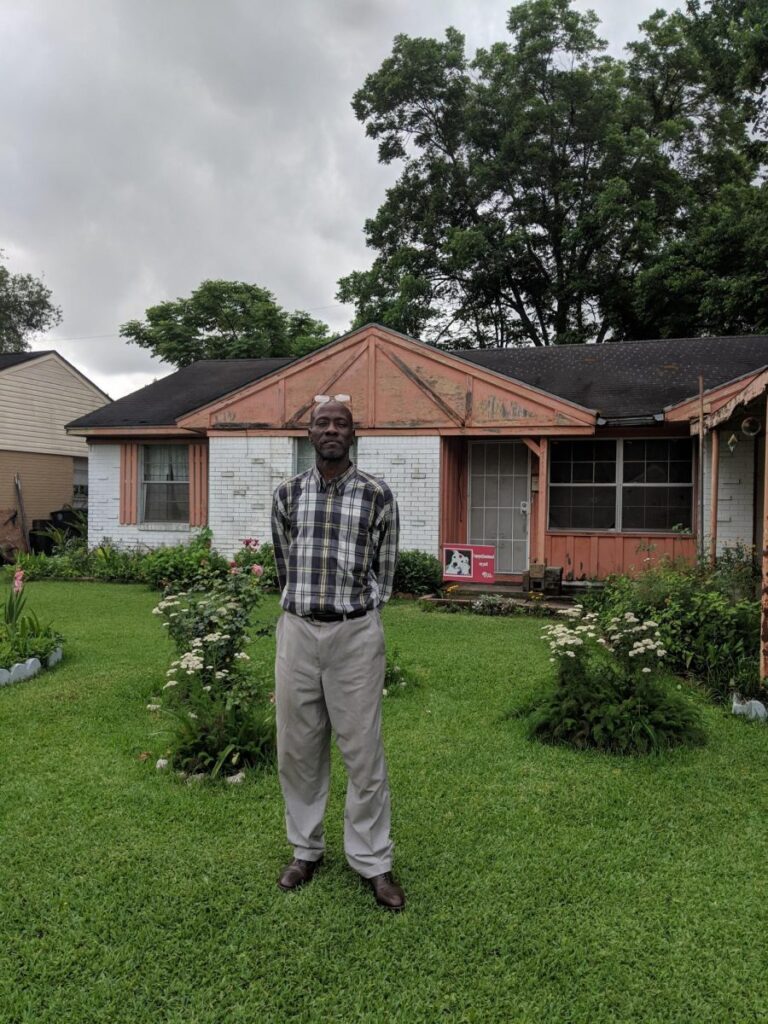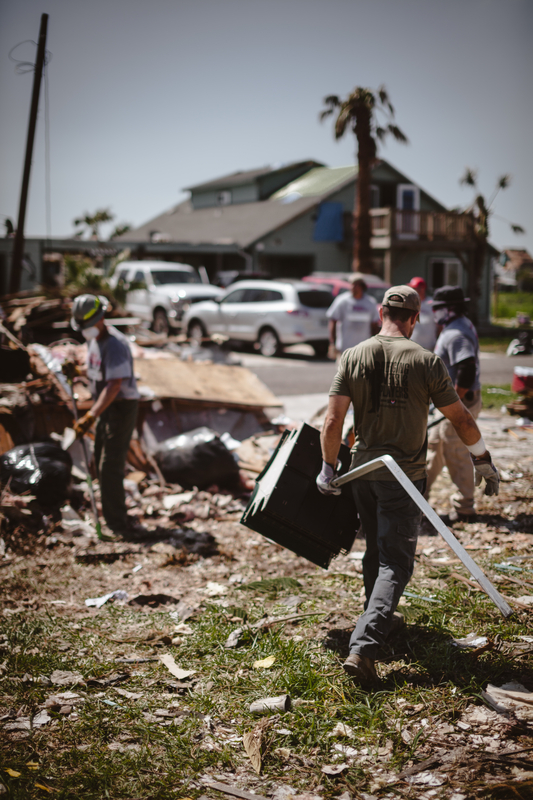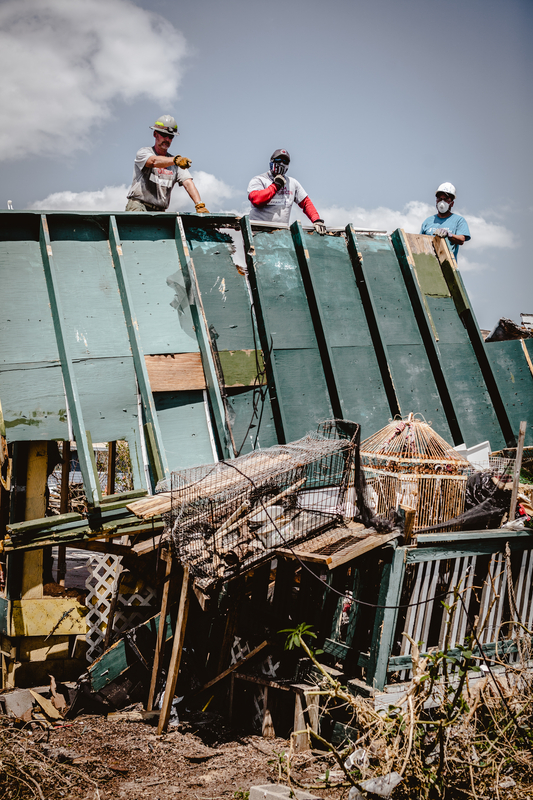When Hurricane Harvey, a Category 4 hurricane, swept through Texas in August 2017, Willie Williams had one goal in mind: protect his house and six dogs. Gathering the necessary supplies, such as bottled water and blankets, he stayed firmly planted inside his southeast Houston home to wait out the storm.
“I didn’t have anywhere else to go,” Williams says, “so I decided to ride it out.”
Once things calmed down, he assessed the damage to his one-story brick home, which belonged to his grandmother who raised him. The home was completely flooded and damaged throughout, including seepage into the floors and walls. Despite the extensive damage, he continued to live there for several months, first seeking help from FEMA and then later from Team Rubicon.

“Two days after Christmas, the government sent me a check for $500 and in January sent out [surveyors] to assess the damage,” he says. “All they could do was replace three of the interior walls with new drywall. During the reconstruction, they wound up breaking my hot water line. Then Team Rubicon got involved.”
Another nonprofit put Williams up in a nearby hotel, a stay that eventually stretched eight or nine months while Team Rubicon rebuilt his home from top to bottom.
“They did a gut job of the entire house,” he says. Someone even built a fence on his property. “That way, my dogs could stay there during the construction. I would come and visit every single day.”
Williams’s situation caught the attention of the Houston Rockets, the city’s NBA basketball team, which donated furniture for his refurbished home.
“[During the reconstruction] Team Rubicon would only let me see the outside of my house so that way it would be a surprise,” he says. “When I opened the back door for the first time and came inside, I was in shock. I brought my sister and my niece over to see the house and they started crying. That’s when it hit me. I was lucky to survive.”
Experts and disaster responders agree that the best way to outrun a hurricane is to avoid it by evacuating. While Williams—who couldn’t imagine evacuating without his pets—was fortunate that he walked away from the hurricane unscathed, here are several tips to keep in mind should you ever experience a hurricane.
Five Tips for Surviving a Hurricane
Recognize Your Risks
As to the kinds of damage people can expect from a hurricane, that depends a bit on where they live, the strength of the storm, and everything, weather-wise, that had happened shortly prior to the hurricane.
“Homes that are closer to landfall, the eye of the storm, and the strongest force winds tend to experience destroyed roofs and downed trees,” said Jacob Meeks, Operations Planning Manager for Team Rubicon. “Closer to bodies of water and where there’s more prolonged rain—think around Lake Pontchartrain or in the Northeast after there had already been lots of rain prior—then we’re looking at flooding and water damage.”

Lately, tropical cyclones have been rapidly intensifying ahead of landfall, leading to even more wind damage.
“Stronger winds lead to more wind-based damage, specifically resulting in downed trees and damaged roofs,” says Luren Vatier, Associate of Operational Planning for Team Rubicon. “For Team Rubicon specific stats, during the 2020 hurricane season, the removal of downed or damaged trees made up the majority of work performed on homes damaged from a tropical cyclone, with only a small percentage focused on water damage. This is a similar trend we are seeing during the 2021 hurricane season, although removal of downed or damaged trees is less of the majority, while there has been a slight increase in the percentage of flood damage we are responding to.”
Mind the Weather Map
Pay attention to official weather reports and evacuate if necessary. If you do decide to stay in place (which isn’t recommended), gather the necessary supplies, such as bottled water, non-perishable food, flashlights, blankets, and a first-aid kit.
Board Up Early
Secure your home’s windows and doors with thick plywood. (Tape does not prevent glass from breaking.) Bring patio sets and other outdoor furniture indoors. Fill your bathtub with water. Turn your refrigerator to its coldest setting and keep the door closed.
Evacuate. Or, Seek Cover and Stay Put
If you can’t evacuate before a hurricane, do everything possible to stay safe as you ride it out. During the storm, stay inside an interior room, such as a closet or a hallway, that doesn’t have any windows. Lie down under a table or other sturdy object that can provide bodily protection.
Avoid the Disaster After the Disaster
After the storm passes many dangers still exist. Don’t enter any standing water, and stay far clear of any downed power lines. Also, avoid walking under any broken trees or hanging limbs. One of the biggest killers after a hurricane or tornado is actually falling limbs.

test



